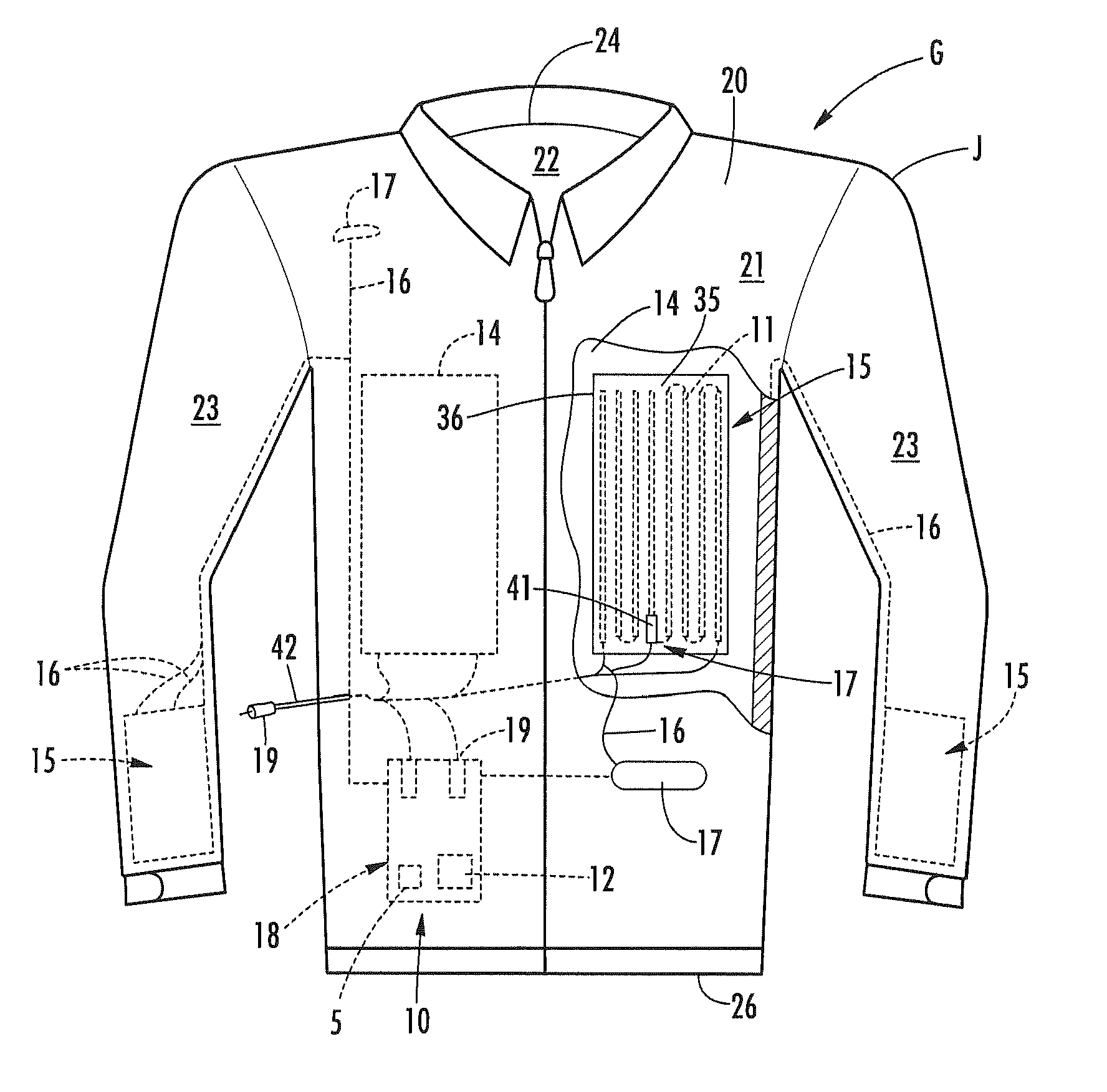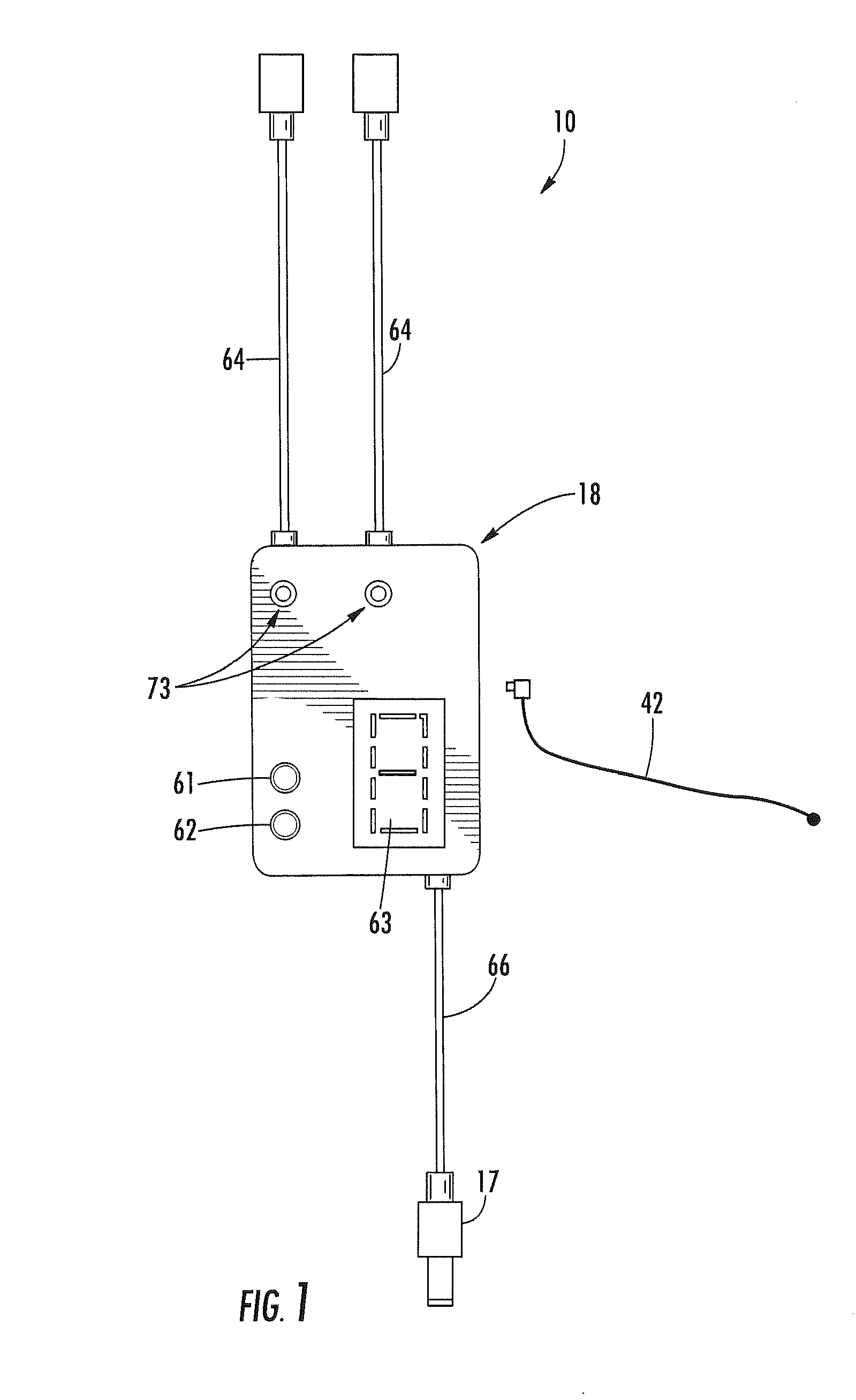Thermal-Regulated Apparel and Wireless Control System Therefor
a technology of wireless control and clothing, applied in the direction of ohmic resistance heating, protective clothing, electrical equipment, etc., can solve the problems of wearer further typically, the wearer is difficult to quickly, easily and accurately make adjustments, and the protection clothing can also be subjected
- Summary
- Abstract
- Description
- Claims
- Application Information
AI Technical Summary
Benefits of technology
Problems solved by technology
Method used
Image
Examples
Embodiment Construction
[0047]Referring now to the drawings in which like numerals indicate like parts throughout the several views, the present inventive concept shown in FIGS. 1A-11B is directed to a heating control system 10 for self-governing, thermally regulated or heated apparel / garments G (FIGS. 3A-3C and 5A-7B) and / or other articles or devices or systems (FIGS. 4A-4B) and related methods of control for such self-governing thermally regulated apparel / garments (FIGS. 8-18C). In one embodiment, thermal output or heat applied through the apparel / garment item or other article G will be controlled via the heating control system 10 through the regulation of the application of electrical power from a power source 12 to an electrically resistive heating element 11 of one or more integrated heating assemblies 15 integrated into the apparel item or garment, such as by fitting in a pocket 14 (FIG. 3A). A user, i.e., the person wearing the apparel item or garment, can engage the heating control system 10 via an...
PUM
 Login to View More
Login to View More Abstract
Description
Claims
Application Information
 Login to View More
Login to View More - R&D
- Intellectual Property
- Life Sciences
- Materials
- Tech Scout
- Unparalleled Data Quality
- Higher Quality Content
- 60% Fewer Hallucinations
Browse by: Latest US Patents, China's latest patents, Technical Efficacy Thesaurus, Application Domain, Technology Topic, Popular Technical Reports.
© 2025 PatSnap. All rights reserved.Legal|Privacy policy|Modern Slavery Act Transparency Statement|Sitemap|About US| Contact US: help@patsnap.com



